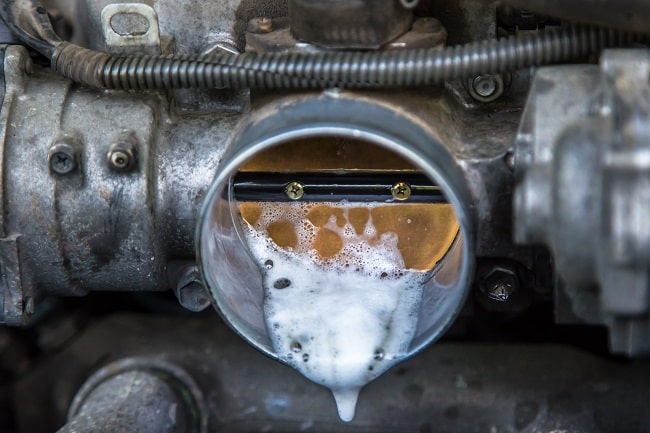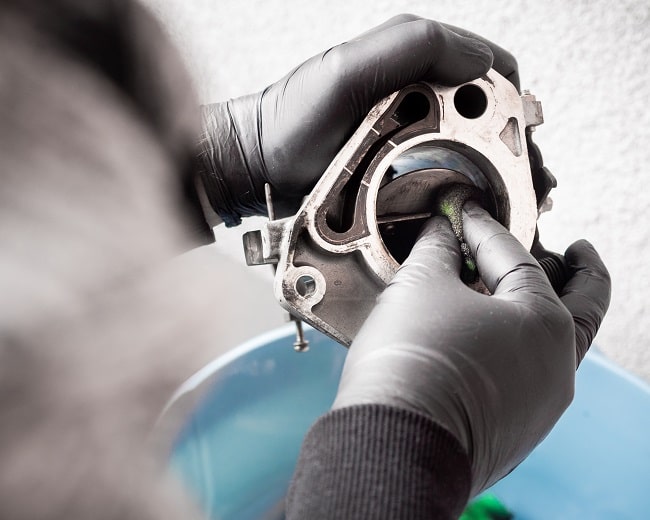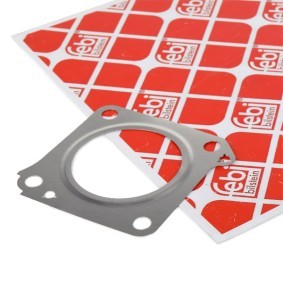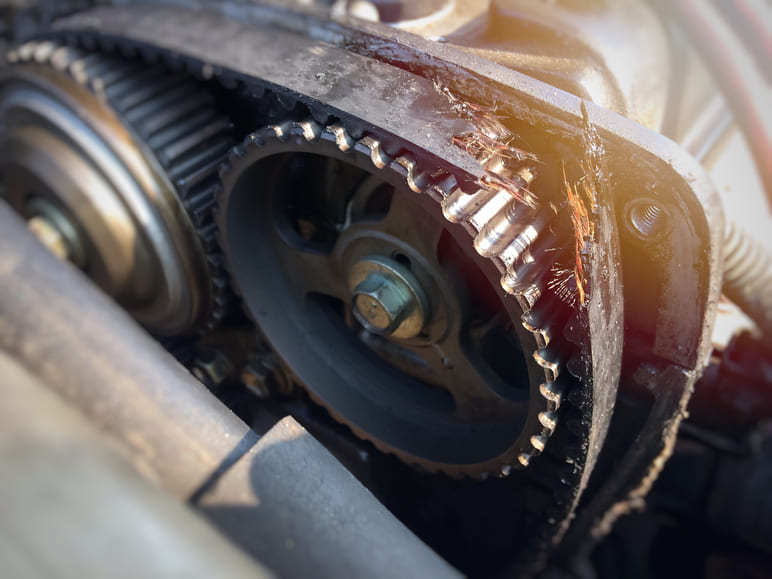
Modern air intake systems can work for a long time without servicing. However, it is still necessary to take some preventative measures around every 120,000 km to keep them operating flawlessly. In particular, it’s worth cleaning a throttle body. You’ll be able to cope with this task on your own having spent just 10 to 20 minutes. In this article, we’ll discuss the symptoms of contaminated throttle and explain how to clean it yourself.
What is a throttle body?
This component is an element of air intake system which controls the amount of air supplied to the combustion chambers. It has a direct effect on the process of air-fuel mixture formation. It might have either mechanical or electric actuation. It is installed into a housing connected to the hoses of the cooling, crankcase ventilation and evaporative emissions control systems, sensor connectors, etc. The throttle plate shaft is fitted with a position sensor which measures the throttle opening angle and speed. Readings from this sensor are used by the engine control unit to adjust injection and ignition.

In mechanical components, the throttle plate is connected to the gas pedal with a cable or lever: when the pedal is pressed, the plate opens to a corresponding angle.
Assemblies with electric actuation include an electric motor which is responsible for opening the air duct; the engine control unit gives commands to this motor based on the readings of various sensors.
What are the symptoms of a contaminated throttle body?

How to clean a throttle body without removing it from the vehicle?
- Park your car on a level surface so that you have access to the engine compartment from all sides. It is better to work outside or in well-ventilated rooms.
- Secure your vehicle with wheel chocks.
- Open the bonnet. Disconnect the negative terminal from the battery.
- Locate the throttle body. It should be somewhere between the air filter and intake manifold. If you have problems finding the component, ask your companion to press the accelerator pedal to see how the throttle valve opens.
- Define which tools you need to detach the air filter pipe. Prepare them. Apart from the tools, you’ll need protective gloves and goggles, paper towels, a little engine oil, soft small brush or soft cloth, masking tape or special conspicuity tape and a can of throttle cleaner.
- With the help of masking tape or conspicuity tape mark all the hoses you’ll have to remove to reach the throttle body and air duct.
- With a screwdriver or spanner loosen the clamp which secures the air duct.
- Detach the pipe carefully. Make sure you don’t damage the gasket if there is one. Perform the job carefully so as not to disconnect electric connections and hoses. If the throttle body is connected to air pipes from both sides, it is enough to remove only one of them.
- Put on your goggles and gloves.
- Spray the throttle cleaner onto the internal surface of the component. Let the compound soak in for 5–10 minutes.

- Remove the dirt with a brush or soft cloth. Take notice: some throttle bodies have a special molybdenum coating. You should clean them with special care.
- Use paper towels to remove the residues of the cleaner with dissolved deposits. If necessary, treat the surface for the second time.
- Wipe the assembly dry.
- Apply a drop of oil to the throttle shaft. Spread it with a cotton swab, for instance.
- Attach the intake manifold pipe and tighten the clamp with approximately the same force it was tightened originally. Return all the removed hoses back to their places.
- Start the engine. Let it idle for a few minutes.
- Do a test drive. If the engine problems were caused by a dirty throttle body, they should disappear.
How to clean a throttle body when removed from the car?
Dismounting the component allows you to clean it as thoroughly as possible. However, it’ll take more time.
Proceed as follows:- Repeat steps 1, 2, 3, 4 and 5 from the previous list. Bear in mind that you might need more tools as you’ll have to remove the whole assembly. Besides, it is advisable to prepare a clean container to drain the cooling fluid and also some fresh coolant, identical to the one you’re using now.
- Remove the air filter housing, if it is necessary to get access to the throttle body.
- Loosen all the clamps and then detach all electrical connectors, hoses and pipes form the throttle body. Take special care while removing the cooling system hose, especially if the engine was running before that: the coolant might be hot.
- Undo the fasteners of the throttle body and remove it from your car. In some vehicles, there is an additional fastener – a bracket. If the throttle is actuated mechanically, you’ll have to disconnect the accelerator cable.
- Cover the intake manifold opening to prevent dirt from getting inside the unit.
- Detach the idle air control valve from the throttle body. It has to be cleaned as well.
- Apply some cleaner to the surface of your car’s throttle body and treat all the hard-to-reach cavities with it. Remove contaminants with a brush and paper towels or a soft cloth.

- Dry the cleaned elements.
- Clean the mounting seat of the throttle body and install a new gasket.
- Install all the components back to their places in reverse order.
- Check the coolant level. Top up if needed.
- Readjust the component. Read further to find out how.
Readjusting a mechanically controlled throttle
- Remove terminals from the battery for 15 minutes. Then, connect them again. If you have already removed them while cleaning the unit, you can skip this step.
- Start the engine. Let it idle for 10 minutes. Remember not to switch on any additional consumers.
- Stop the engine for about 10 seconds. Start it again.
- Wait until the power unit warms up to the operating temperature. After that, you can start using the vehicle.
- Take notice: you might need to drive 150–200 km until the idling stabilises.
Readjusting an electronically controlled throttle
The readjustment process might vary in different vehicles. Therefore, before you start the procedure, consult the vehicle manual for the exact step sequence.
The general algorithm is as follows:- Study procedure and try to remember it. You’ll have to act quickly so you won’t have time to check the details.
- Start the engine. Warm it up to the working temperature.
- Stop it for 10 seconds.
- Switch on the ignition for 3 seconds.
- Press the accelerator pedal quickly for 5 times. One depression should take one second.
- Press the gas pedal to the floor for 7 seconds. Keep it depressed until the “Check Engine” light burns steady and hold it for 3 more seconds.
- Release the gas pedal and start the engine.
How to prevent the throttle body from getting dirty?
Conclusion
Engine stability and performance depend on the proper operation of the related assemblies. Therefore, throttle body cleaning is one of the compulsory maintenance procedures for the intake system. Our tips will help you to do it yourself and save on repair shop services.


















Comment